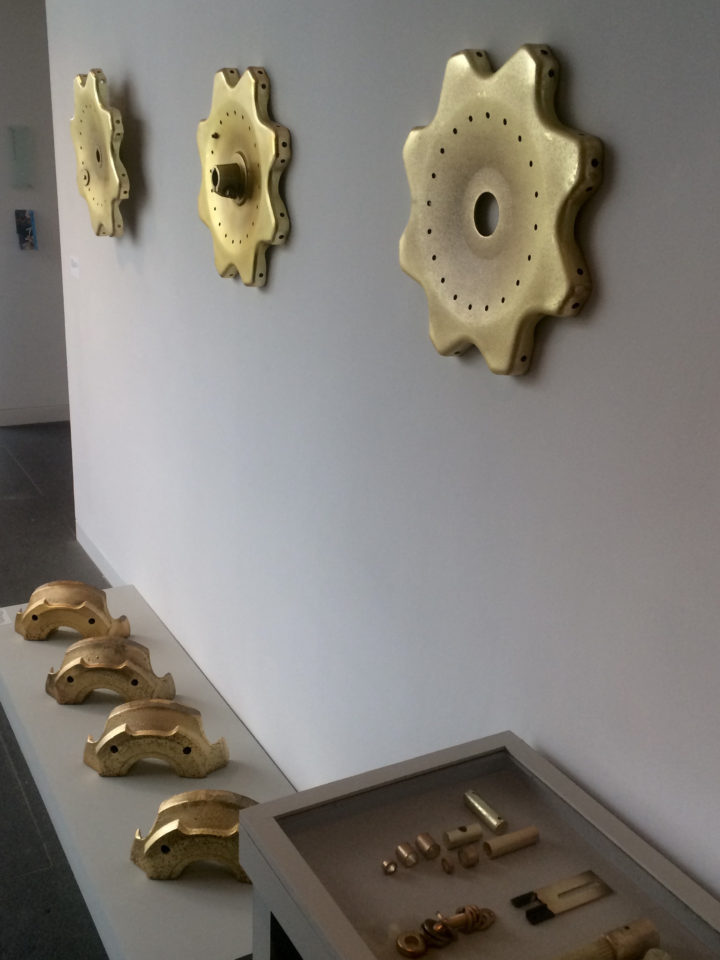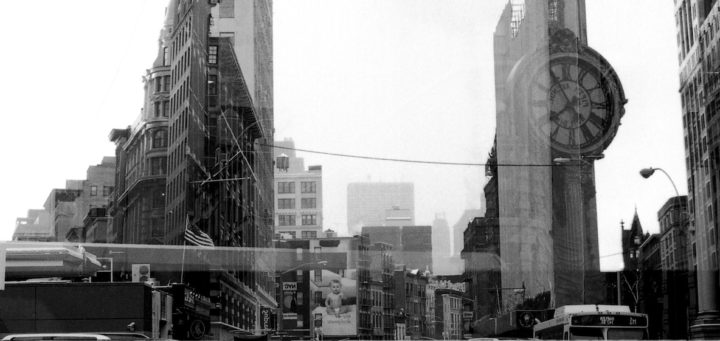By Gabriela Jurosz-Landa
The Aldrich Contemporary Art Museum in Ridgefield, Connecticut: Four Solo Exhibitions Engaging Place, May 21, 2016 – February 5th, 2017
“Place” in our world is becoming redefined, extended, pushed, fluid. Once a thing of steadiness, today “place” is rather a point, one to leave from or come back to, almost like a space-station traveling in orbit. Place has become smaller in space, but also in significance.
You may not perceive your home this way, if you have lived, perhaps in a small town or a city-remote area. It is different though, for those living in New York or other big cities. If leaving your house for work and returning to it only to sleep and leave again in the early morning, this place of belonging and attachment becomes one of detached engagement. To the one who travels a lot, home is a place of shelter as well, though penetrated by all the other places that have shaped his identity. Likewise, to the online-student, the place of his university becomes detached from its geographical location, shrunken to non-existence.
With a changed perspective of “place,” we may also examine the role of “nature,” and the ways we look at nature’s gifts. Instead of treating them as fruits, our minds turn them into “products.” Aware or unaware, concerned or oblivious, we have long transformed our image of and behavior towards nature and man within it into an economic product. Shopping malls and restaurant chains have become placeless, and even housing and museums have lost a sense of personalized individuality or uniqueness.
The Aldrich Contemporary Art Museum in Ridgefield, Connecticut, is currently presenting an exhibition on just this topic. In Four Solo Exhibitions Engaging Place, the artists have engaged with the question from a variety of original perspectives. While the projects of Kim Jones, Virginia Overton, and Peter Liversidge are very considerable, in this article I want to high-light the work of David Brooks.
David Brooks: “Continuous Service Altered Daily” 2016

“Continuous Service Altered Daily”
For his museum contribution “Continuous Service Altered Daily,” artist David Brooks (born 1975 in Indiana) brought a 1976 John Deere combine harvester from Ohio. He deconstructed the industrial machine into its 18,000 pieces, and placed them as art objects on the gallery walls, in glass-cases, and in the museum garden. Though structured and organized, the parts seem to have exploded into space. In their new role and appearance, the machine parts became dematerialized and ephemeral. Turned into timeless icons, the they resemble wings; screws to another world; doorways of new interpretations. Additionally, the machine, once the achievement of modern industry, takes the viewer decades back, relating his own history and comparing it to today’s state-of-the-art society.
In the next gallery, the visitor looks at brass-plated Paratisoids. These machine pieces are used to separate parasites from crops. Setting them into glass-cases, as if they were pieces of golden jewelry, the artist plays onto our materialistic perception of things.
Further machine parts included in the exhibition, were originally built for pollination. A companion wall text explains the pollination process. The text’s rational wording, which makes it sound even more morbid:
“…pollination is the transfer of pollen from the male parts of a flower to the female parts of a flower of the same species, which results in the fertilization of plant ovaries and the production of seeds. While the natural ‘pollinators’ are bees, birds, beetles, flies, butterflies, who live by doing this in a healthy symbiosis with the flowers, a machine does the service in a very different way, scale, motivation, and not free of charge of course…”
The artist creates awareness about manipulation of animals, and our mechanical dealing with living beings in general. Seeing this detailed process behind modern agriculture which helps turning us into what and who we are, is eye-opening.
For centuries, we had coded this kind of re-functioning of objects as progress. It is the work of art to now look at the same thing in a different manner. The Brooklyn-based artist shows the relation of industry and ecology, machine and nature, the ways a machine works nature, and they way we have become part of that change, and bought into it. Along the way, we lost a part of our senses, values, and sensibility towards nature, including man. As the Dalai Lama puts it: “Man has been created to love and things have been created to be used. The world is out of synch, because man has gotten to use people and instead to love things.”
“People obtain non-material benefits from ecosystems,” writes David Brooks, “such as aesthetic values, intellectual development, spiritual enrichment, and recreation. Landscapes with significant natural elements like plants, water, and rocks provide psychological relief in addition to their aesthetic values. Ecosystems provide a rich source of inspiration for art, folklore, national symbols, architecture, and personal or group motivation. Through iconic species and landscapes, we easily enter into a relationship with a particular place. Often they capture the imagination of the public through their charisma, beauty or recognizably.”
Curator Amy Smith-Stewart adds a further point: “The stunning array of dismantled machine parts, exhibited in a diverse system of presentation, are designated according to the ecosystem service it represents, making it impossible to conceive of the combine in its entirety or to determine the machine’s complete functionality; similarly, an ecosystem integrates innumerable processes, many of them intangible or undetectable, into one whole, making it impossible for us to conceive of a life unfolding within it.”
David Brooks relates nature to the abstract and to ways of our perception of it. With his project, he contributes to create awareness and to educate about thought processes that would guide into the future. Recently, a Mayan city has been discovered. By relating architecture to the cosmos, the discoverer tapped into the very Mayan way of thinking. Hopefully Brooks’ project helps to set our civilization on the way into a future – one that will embed man into nature and the greater cosmos. To speak with the Mayans, “place” then will become something integrated once again.
– – – – – – – – – – – – – – – – – – – – – – – – – – – – – – – – – – – – – – – – – – – – – – – – – – – – – – – – – – – – – – – – – –
Gabriela Jurosz-Landa is a scholar of art anthropology and anthropology. She lectures and publishes on topics of art and museology, Mayan traditions and spirituality, Czech cultural philosophy, and city-anthropology. She is a member of the Czech Association of Art Historians in Prague, and the jury of Berlin-based literary contest Federleicht. As founder and president of Forum of World Cultures, she organizes international cultural-political events. She has contributed to ANTHROPOS-Journal, the BBC, ART NEWS, DIE WELT Germany, MUENCHENER MERKUR, ATELIER Prague, Euro-Journal, PRAGER WOCHENBLATT, EL NUEVO DIARIO Nicaragua, THE REVUE Guatemala, SFERA and MLADY SVET Prague. Ms. Jurosz-Landa’s essay Emmigrantenkinder received an award from the inter-cultural magazine Český Dialog. She currently resides in New York City.










